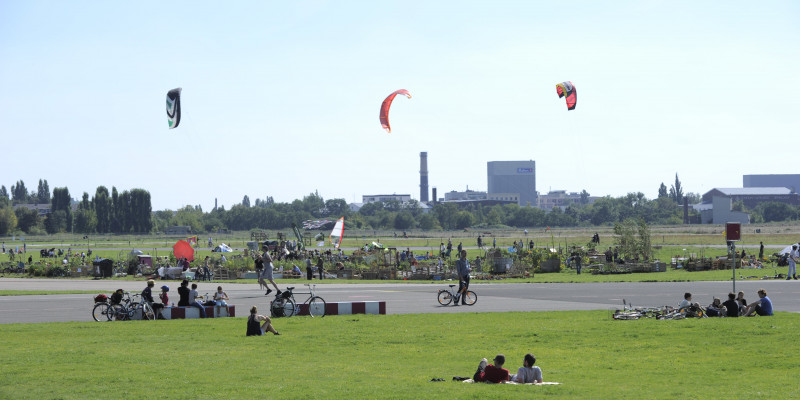Environmental justice in urban areas – Recommendations for action in municipal practice
The health burden caused by environmental problems is often especially high in socially disadvantaged urban neighborhoods. These areas are exposed to multiple burdens including noise, air pollution and social problems. They also often have fewer green areas. In a research project on “Environmental justice in urban areas – Development of practicable strategies and measures to reduce socially unequal distribution of environmental burdens”, the German Institute of Urban Affairs (Difu) explored how local authorities can be supported in their activities to create more environmental justice at local level.
The project was supported by the German Federal Ministry for the Environment, Nature Conservation, Building and Nuclear Safety (BMUB) and the Federal Environment Agency (UBA).
Summary "Environmental justice in urban areas - Development of practically oriented strategies and measures to reduce socially unequal distribution of environmental burdens"
Initial situation
Many municipalities do not yet have any strategies geared to preventing and reducing the spatial concentration of health-relevant environmental burdens and ensuring socio-spatially just access to environmental resources.
In a BMUB / UBA- funded project on “Environmental justice in urban areas”, which ran from January 2012 to September 2014, the German Institute of Urban Affairs (Difu) explored how an integrated view of environmental, health, social and urban-development factors can be established as a basis for planning and decision-making in municipal practice.
Project components
In order to derive recommendations for action at federal, state and local level, Difu worked on several project components interlinked in terms of content.
These included the performance of municipal case studies (Bremerhaven, Bottrop, Leipzig, the Berlin district Tempelhof-Schöneberg, Mannheim) and a national symposium (“Potentials for more environmental justice in urban areas”, Berlin, 19/20 November 2012). In addition, based inter alia on the results of a Berlin pilot project on environmental justice done by the Berlin Senate Department for Urban Development, Difu developed an integrated monitoring approach which comprises data describing the state of the environment, social conditions and the health situation. It also analysed and evaluated legal and informal instruments with regard to their potential for improving health-relevant environmental conditions and enabling socio-spatial differentiation. In a simulation game with five municipalities (Berlin district Friedrichshain-Kreuzberg, cities of Bottrop, Düsseldorf, Mülheim/Ruhr, Nuremberg), instruments and procedures for the implementation of the environmental justice approach were tested and validated.
Selected results
Integrated governance: The study shows that coordinated action by all relevant departments and stakeholders is indispensible. This requires in particular a greater socio-spatial orientation of the local environment and health departments.
Integrated monitoring: A two-stage procedure was proposed, consisting of a city-wide analysis and a more in-depth investigation of areas identified as being subject to multiple burdens in the first step. The approach requires the combined use of environmental, health and social data. A selection of basic and more detailed indicators is provided for orientation.
Formulation of objectives and measures: It is essential to determine the area-related need for action. Links, e.g. for inclusion in integrated urban development concepts, should be identified.
Use of planning instruments and instruments in environmental law: A set of instruments appropriate to the planning area concerned must be applied. In environmental planning, for example, a systematic check for socio-spatially oriented priorities suggests itself.
Use of financial resources: Funding from support programmes should be targeted at areas with multiple burdens. The performance of pilot projects would make it possible to test the practicality of the approaches developed in the project.
Participation and involvement of those affected: Appropriate citizen participation in planning and decision-making processes is important. A suitable vehicle are methods that activate the participation of socially disadvantaged people. The methodological expertise within the administration may have to be broadened to facilitate this.
Outlook
The urban concentration of populations and infrastructures makes environmental protection in cities an increasingly important topic. The goals here are a socially compatible environmental policy and the improvement of the quality of life in socially and environmentally disadvantaged urban districts.
Further research into the implementation of environmental justice at local level is needed, concerned inter alia with demonstrating and providing scientific guidance to the practical application of the recommendations for action developed by Difu in its research project.
Only if many actors from politics, science, civil society and administration work together will it be possible to permanently integrate the topic of environmental justice and create sustainable residential areas and healthy living conditions for everyone.
 Click to enlarge
Click to enlarge
